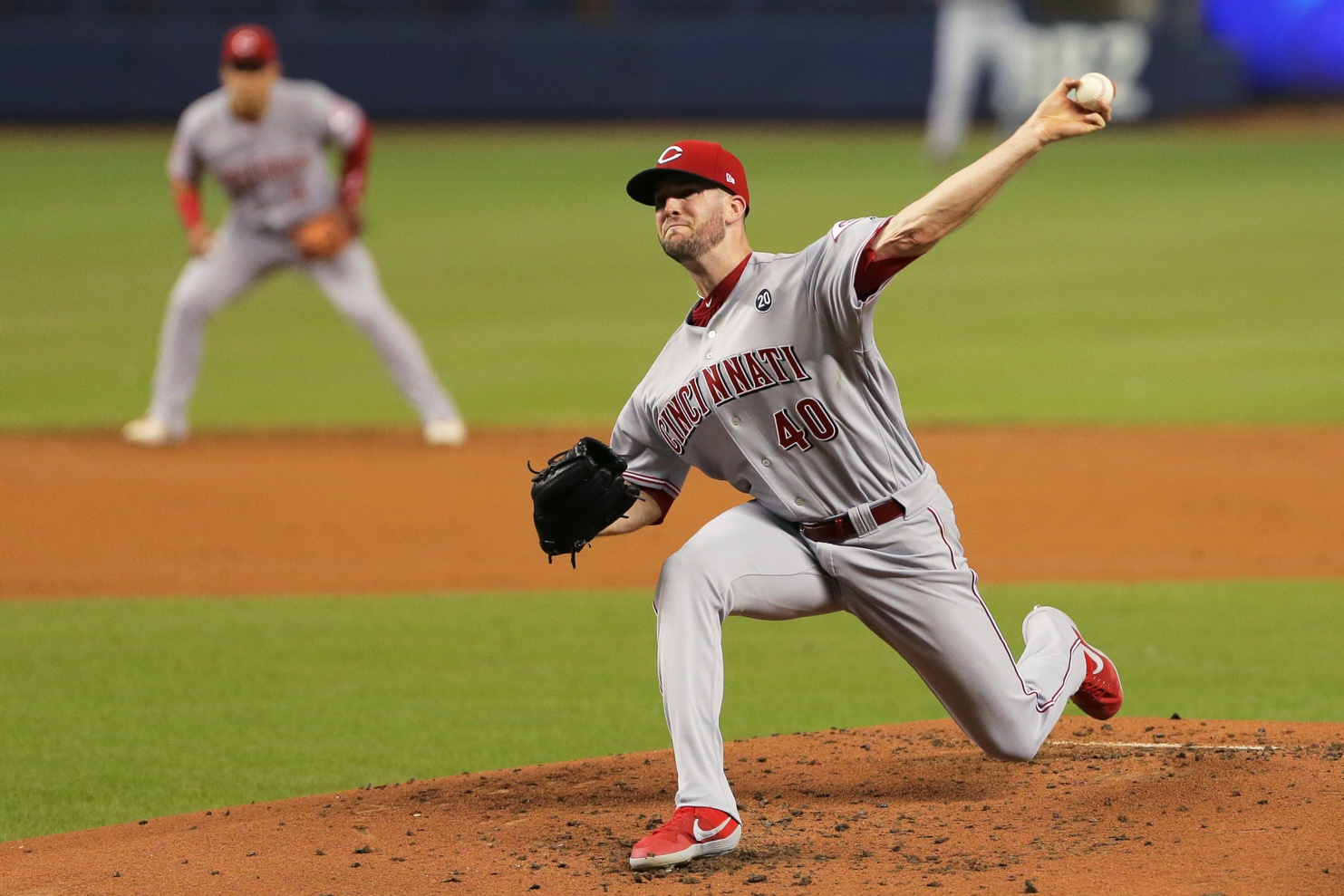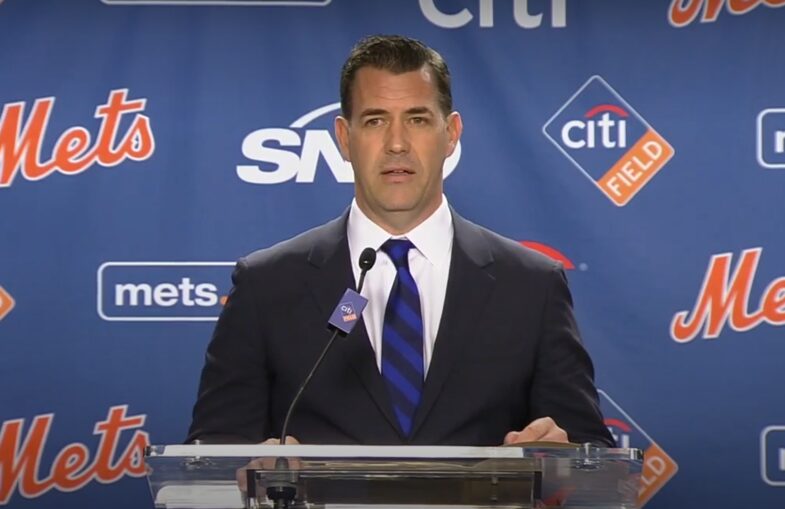
Mets fans can anticipate some of 2019’s late successes to carry over into 2020, though pushing over the top will depend on a number of factors. One can really only assume that Noah Syndergaard and Brandon Nimmo will return to form, though the same cannot be said as confidently of high-leverage relievers Edwin Diaz and Jeurys Familia – who struggled much more consistently to perform – and even less so of veterans Robinson Cano, Yoenis Cespedes, and Jed Lowrie – who struggled to stay on (or even reach) the field altogether.
Adding Dellin Betances and retaining Brad Brach to stabilize the bullpen was a solid measure by general manager Brodie Van Wagenen to address one such uncertainty, and while FanGraphs hinges generously on past (largely unseen in 2019) results from Diaz and Familia in its projection, it still expects the team’s current relief corps to be the best in the National League.
Even so, coming away with a division title in 2020 is no sure thing. Overthrowing the defending back-to-back champions in Atlanta and overstepping the World Series champions in Washington is unrealistic without extensive, evident reinforcements.
Exhaling in the face of Josh Donaldson and Anthony Rendon taking their bats out of the NL East is not a proactive move. It’s all the more dangerous considering the Mets themselves lost their own impact player in Zack Wheeler – to a Phillies team preparing for an identically stacked deck.
Tie in Wheeler’s departure with the fact that New York declined either type of upgrade behind the plate over everyday abysmal pitch-framer Wilson Ramos or light-hitting backup Tomas Nido, and this remains the most consequential personnel change of the offseason.
The Mets have limited capital to spend given their obligations to Cano and Lowrie – the latter of whom has arguably no path to consistent at-bats in 2020 despite being owed $10 million. Obviously, their path to spending the same $23.6 million annually as Philadelphia with Wheeler is hazy.
Even so, adequately replacing a piece as vital as Wheeler should have been a priority. His 4.7 fWAR in 2019 tied with Jack Flaherty for seventh-best in the National League, his 31.4% hard-hit rate fifth, his 3.48 FIP ninth, his 3.9 K/BB ratio 15th, and his 4.20 SIERA 18th. Among qualified big-league pitchers, his fastball made the 94th percentile in velocity and 59th in spin rate, and his curveball spin made up the 71st. Wheeler’s 8.9 fWAR the last two seasons is the ninth-highest in baseball.
In order to address this loss, the team signed right-handers Rick Porcello and Michael Wacha for $10 million and $3 million, respectively, and have evidently thought little on the free-agent market for starters since. But as more successful clubs have begun addressing their own (in some cases) even dire areas of maintenance, it has become embarrassingly apparent that the Mets’ front office may have shown a hand too early.
Porcello, a Cy Young award-winner with the Red Sox in 2016, has managed at least 30 starts the last three years, though his innings numbers have fallen from 203.1 to 191.1 and most recently to 174.1. His 4.45 FIP in that time isn’t egregiously bad on the surface, but his pitch velocities and values have gradually declined in sync. His changeup (14.5 outs below average) ranks ahead of Kyle Freeland‘s as the second-worst in baseball and his curveball (8.5 below) ninth-worst.
The 31-year old still makes out nicely when it comes to spin rates, but in no world does a pitcher who had the third-lowest fWAR and seventh-highest SIERA in the American League last year serve as an adequate replacement for Zack Wheeler.

Wacha, on the other hand, has made 39 starts the past two years, and in that time owns a 5.05 FIP and the third-worst fWAR (0.8) among starting pitchers with at least 180 innings. His spin rates have ranged from the sixth to 21st percentile in that time, he’s made three trips to the IL, and his last season as a Cardinal ended with a relegation to the bullpen and outright exclusion from the team’s playoff roster.
Adjusted to the sample of innings, his most recent campaign featured the highest FIP (5.53) third-highest SIERA (5.08), and second-lowest fWAR (0.0) among his class of free agent starters.
The CAA client could make another $8 million in incentives if he were to make 30 starts, and Van Wagenen has already cited the 28-year old righty as “starting rotation depth” with the potential to, “in our fifth spot, make our team better.” Offering what it’s worth right off the bat, Steven Matz has already been asked about in trade discussions dating back to the winter meetings in San Diego, as has Marcus Stroman.
In a case parallel to the rumors and developments around the team trading either Dominic Smith or J.D. Davis to offload Lowrie’s salary, the Mets have tasked themselves with further lateral work in order to rationalize a misguided and unnecessary signing. Not only did the Mets tear off more available money than they may have been able to chew, but they also did so by biting into something rotten, and the surrounding climate for starting pitchers has only confirmed this.
Take the Twins for one such example: having lost an important piece of their own rotation in Kyle Gibson, they took to the free agency board and grabbed Rich Hill and Homer Bailey for a total payment ranging between $10-$16.5 million. Even in replacing Gibson, a pitcher both less effective and less valuable than Wheeler, Minnesota pulled off a cheaper, more effective arrangement of pitching depth to limit collateral damage.
Hill, who turns 40 in March, won’t pitch until the early summer, and even in a projected 16 starts is worth 1.3 WAR – only a half-win less than Porcello, the trusted innings-eater the Mets took for an extra $7MM in base-pay.
Bailey, meanwhile, may be the only pitcher of the four “replacements,” so to speak, to actually take a step forward in 2019. His 4.60 SIERA in 163.1 innings doesn’t grade out any better than Porcello, though his 2.9 fWAR in 2019 was a whole win above, as were his pitch values (0.5, and 8.5 RAA better on his fastball and slider, respectively) and swinging-strike rates (10.8% to 8.0%).
It would be dishonest to treat either pitcher like a suitable successor to Wheeler, but even this lowly combination has the Mets’ current plan beat, it’d seem. The Mets are giving Wacha the same amount of money in base pay that Minnesota is giving Hill, who has the 15th-best SIERA in the league since 2017.
And if they actually commit to Wacha as a fifth starter and he makes as little as 24 starts, they will be paying him as much as the Twins are paying Bailey, who had the seventh-lowest FIP and sixth-highest fWAR among free agent starters. You can bet some of the money Minnesota saved here found its way into Josh Donaldson’s pockets.
Even the Dodgers, a team that by all accounts should have been in the World Series last year and remains the NL frontrunner in 2020, weren’t satisfied relying on promising pitching prospects after lefty Hyun-Jin Ryu signed with Toronto.
Between Julio Urias (3.34 FIP in four years and 28 starts in the majors, only 23), Dustin May (ranked the tenth-best RHP prospect via MLB Pipeline), and Tony Gonsolin (2.89 ERA in first five big-league starts), the Dodgers had the depth to rest on their laurels. Instead, they took fliers on Alex Wood and Jimmy Nelson for $5-14 million, depending on incentives.

Wood, 29, and Nelson, 30, are both bounceback candidates after injuries slowed them in 2019. Wood dealt with a back problem in seven starts with the Reds, Nelson with elbow effusion after a year recovering from a torn labrum. Even then, FanGraphs projects a combined 2.0 fWAR out of them… not too far off from the 2.3 expected of Porcello and Wacha at roughly three times the price.
It wouldn’t necessarily be fair to blame the Mets’ front office for picking one healthy pitcher in Porcello over two lottery tickets, but considering how much better the lefty Wood was in his prime (one more recent than Porcello’s) from 2017-18 (5.3 fWAR, 50.7% GB, 3.76 SIERA), it again begs the question as to what motivated them to sink $10 million – no questions asked – into someone with less upside.
Wood, who has continued ramping up spin and velocity training with Driveline Baseball, would have been more logical, and furthermore thrifty. Nelson showed improvement after the Brewers activated him in September, cutting his walk-rate while striking out 12.4 batters per nine innings in a long-relief role. His fastball velocity climbed back toward 95 mph during that time, and even in what was a lost season in the aggregate, the righty managed to scratch the 76th and 85th percentiles in fastball and curveball spin, respectively.
Again, there is little stock in painting any such acquisitions as sufficient replacements for Zack Wheeler, but when seemingly every pitcher within the Mets’ apparent price range has flags, taking a stab in the dark at familiar names is not a winning strategy. At that point, the front office would have been wise to follow through on creative options with tangible upside. There was nothing creative about devoting more than half the offseason budget to two of the league’s worst pitchers since 2017.
Let’s play devil’s advocate and say the Mets had instead ripped a cheap page out of the Dodgers’ blueprint. Not only could they have still found themselves a higher-upside package, but they would have done so with far more flexibility to polish up elsewhere. Perhaps they could have made a run at another reliever like Collin McHugh or Francisco Liriano, or maybe even pushed for an everyday center fielder without having to ponder the burden of another salary.
The Mets may have been able to take an approach akin to the Nationals, who have retained five of their six expired contracts (including Stephen Strasburg, Daniel Hudson, and Howie Kendrick) while signing more free agents this offseason than any other team. Of course, they did lose Rendon to free agency and couldn’t board the Donaldson train in time, but they’ve still set out to improve in middling areas while still stopping the bleeding at the hot corner.
There remains little guarantee that the team will be better in 2020, though the worst newcomer in the mix to receive a big-league contract (based on last year’s fWAR figures) was Will Harris (1.1). The worst projected player in 2020, meanwhile, Eric Thames (0.3), had a 116 wRC+, .851 OPS, and 48.8% hard-hit rate the prior year; he’s replacing Ryan Zimmerman at first base.
Looking at their motley crew of infielders, there’s an obvious disparity between their productivity and that of Rendon’s. Between Asdrubal Cabrera and Starlin Castro, the Nationals aren’t doing a lot to directly attend to the loss of a perennial MVP candidate, but the commitments they’ve made also total under $10 million annually, and both infielders still hit at above-average clips in 2019.
Considering the quality in free agent third basemen drops rather precipitously after Mike Moustakas, the Nationals definitely made out well with the two they picked. Tack on the fact that they’ve continued a months-long project of improving a bullpen that once fed the bottom of the league and, at the very least, it’s clear the Nationals had a multifaceted plan to stay competitive into 2020.
The Mets, meanwhile, gave the bullpen one new arm in an attempt at covering up a haphazard job replacing Zack Wheeler that not only made the rotation considerably worse, but also crippled their available resources.
Any other offseason acquisition would almost surely come at the expense of a valuable young component like Matz, Davis, Smith, or even prospects. Explaining such a reality with the general manager’s decision to coronate Michael Wacha their fifth-starter in early December is not something fans, writers, or analysts that support winning baseball teams do very often.
It is the perfect example of an organization paying the bottom of the barrel as if it were settling for second-best and never stopping to consider alternatives.
















